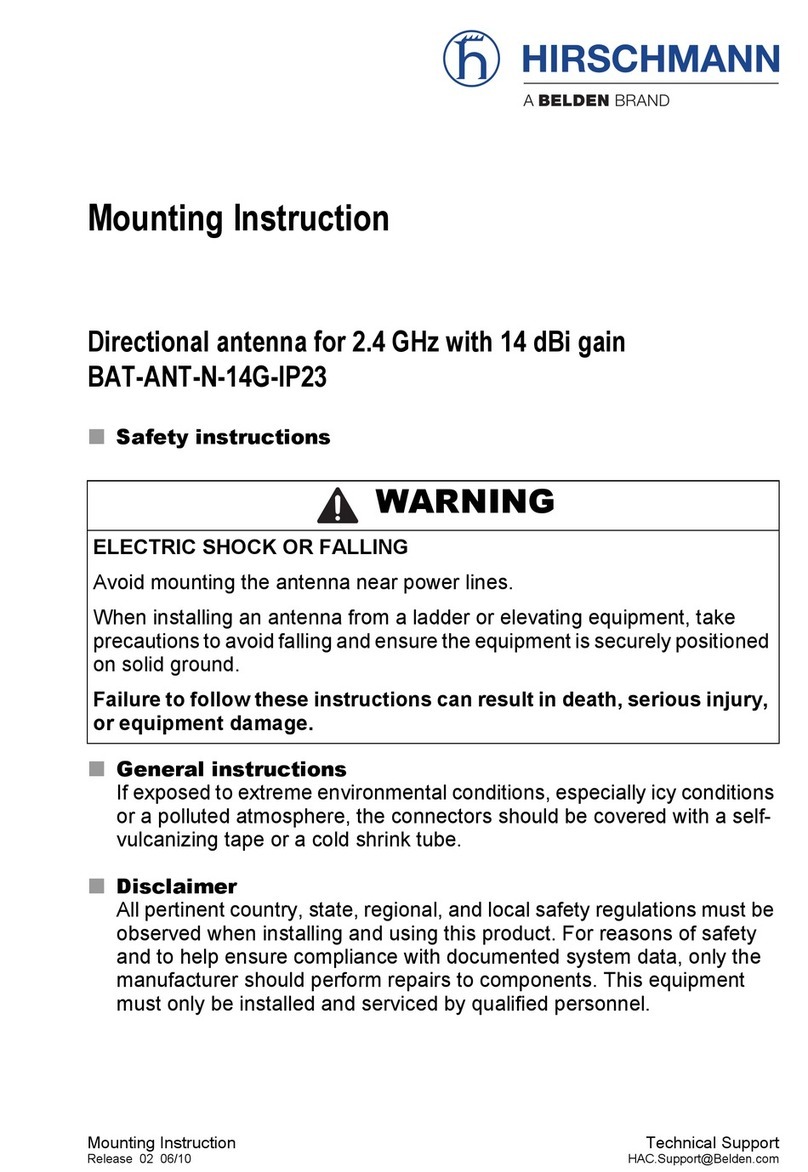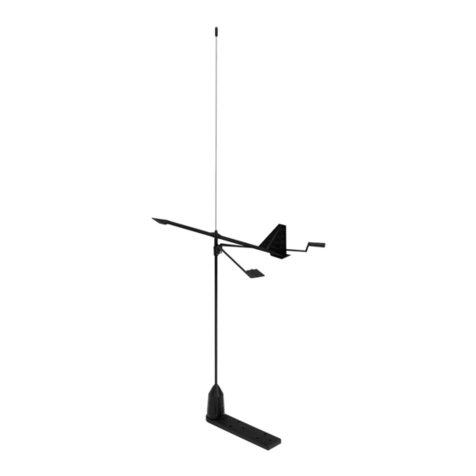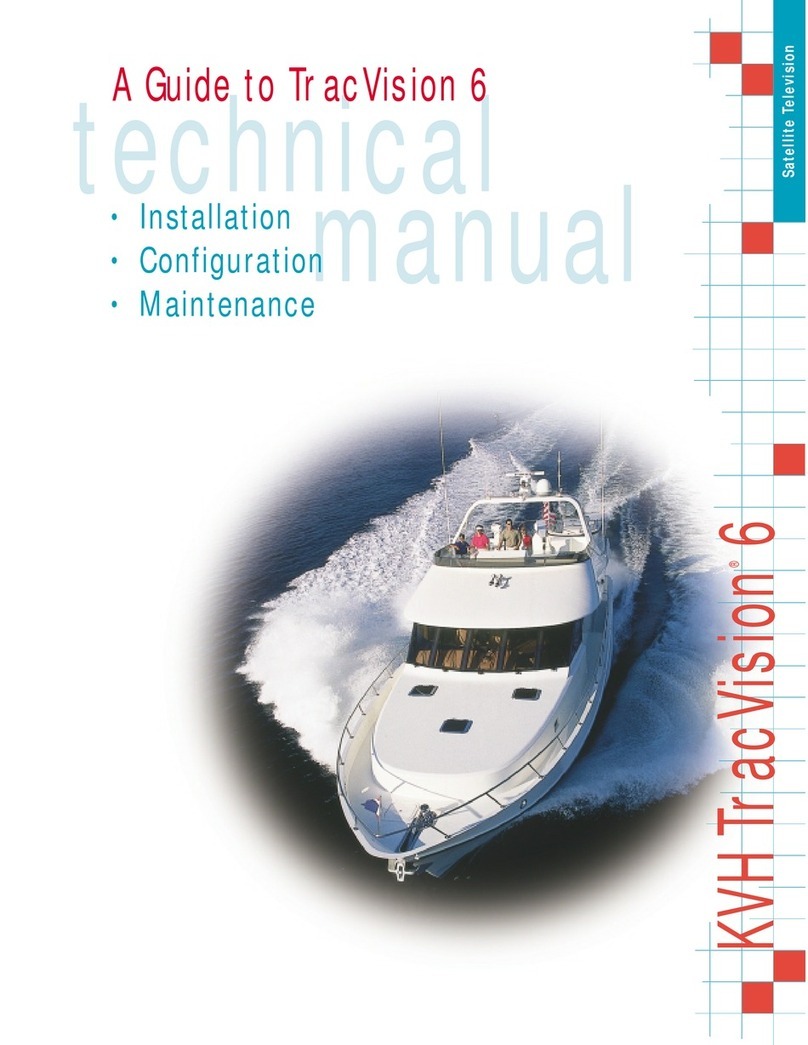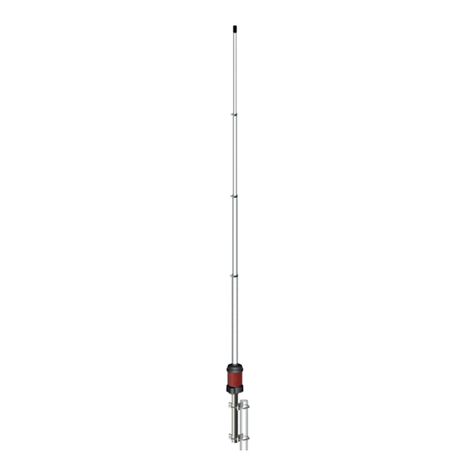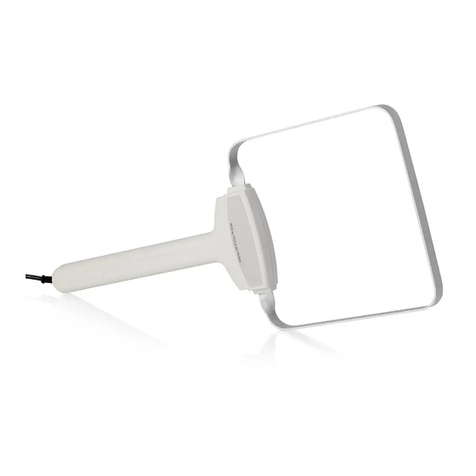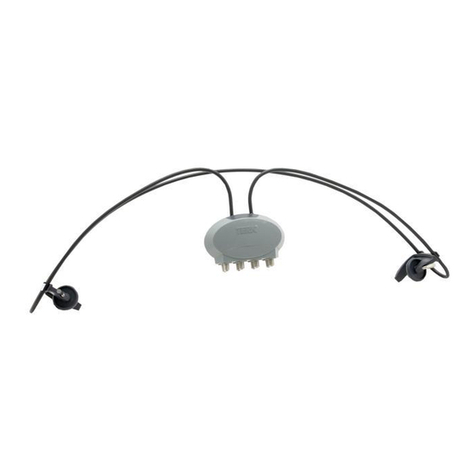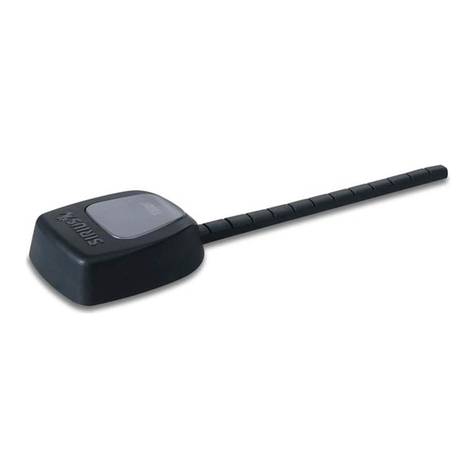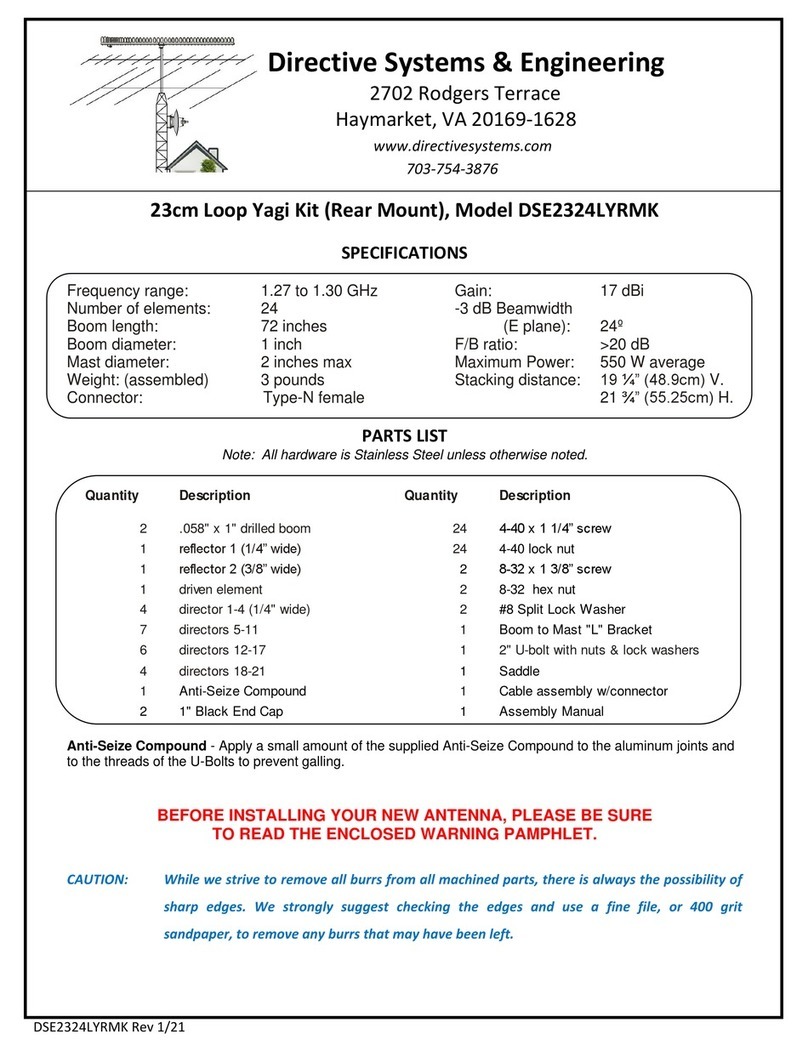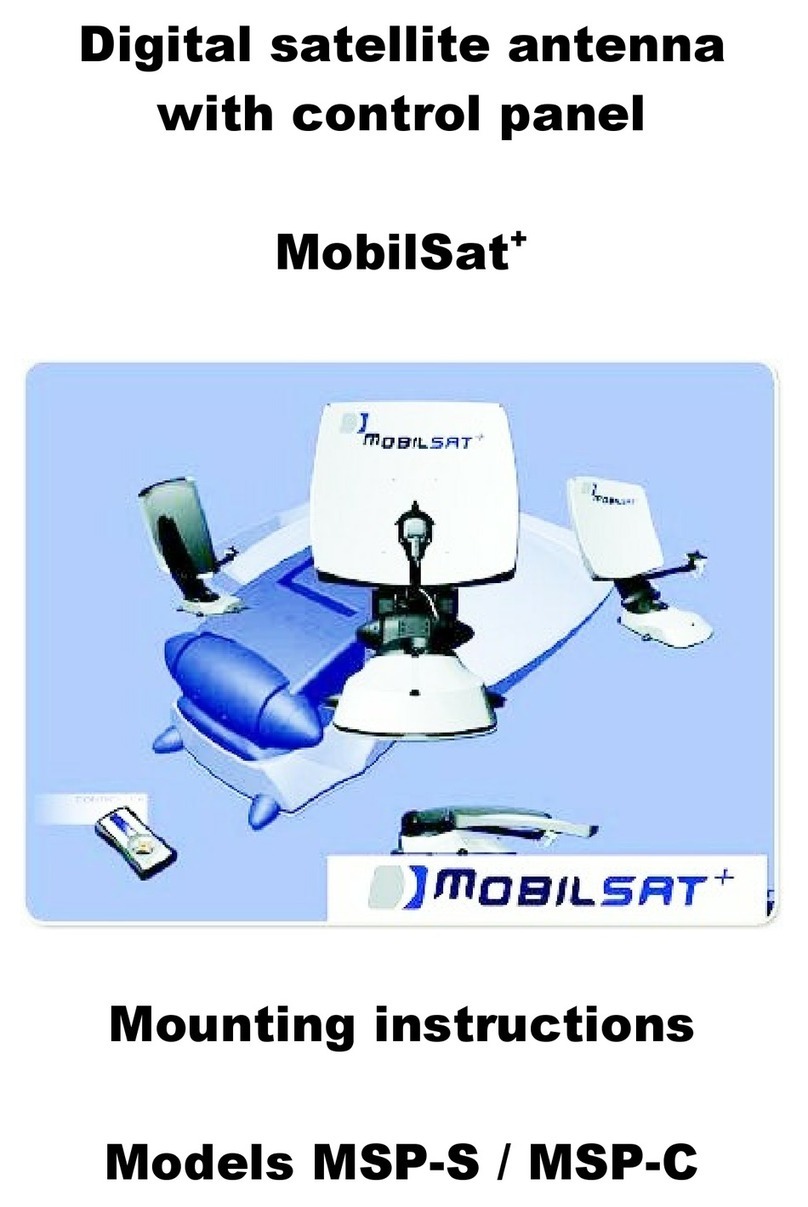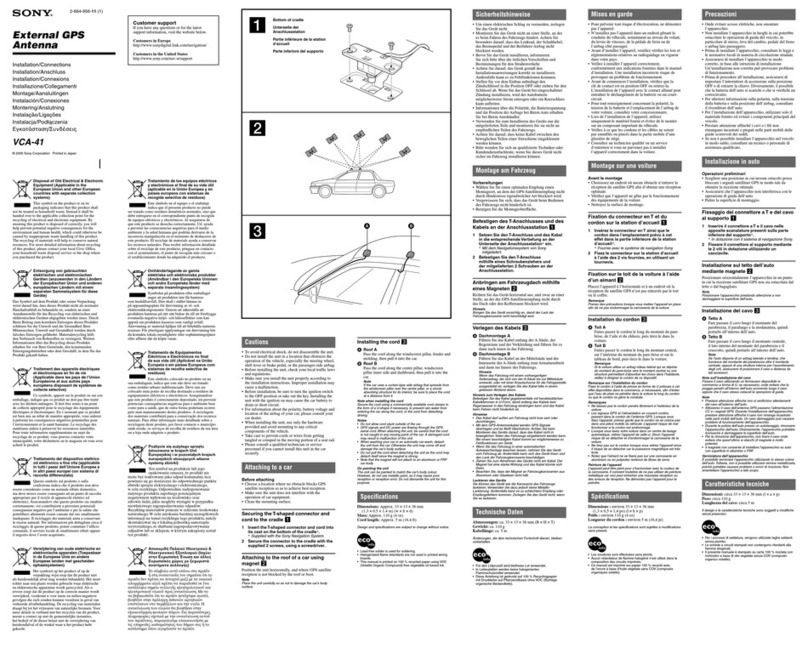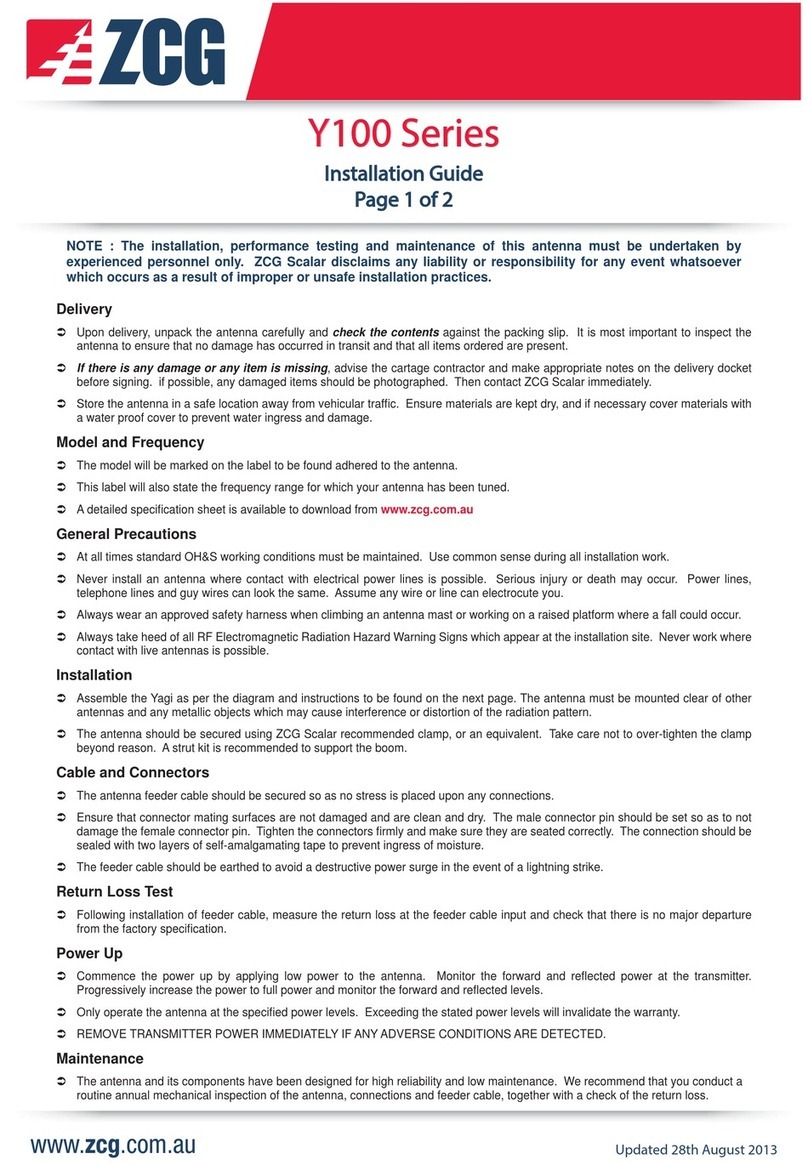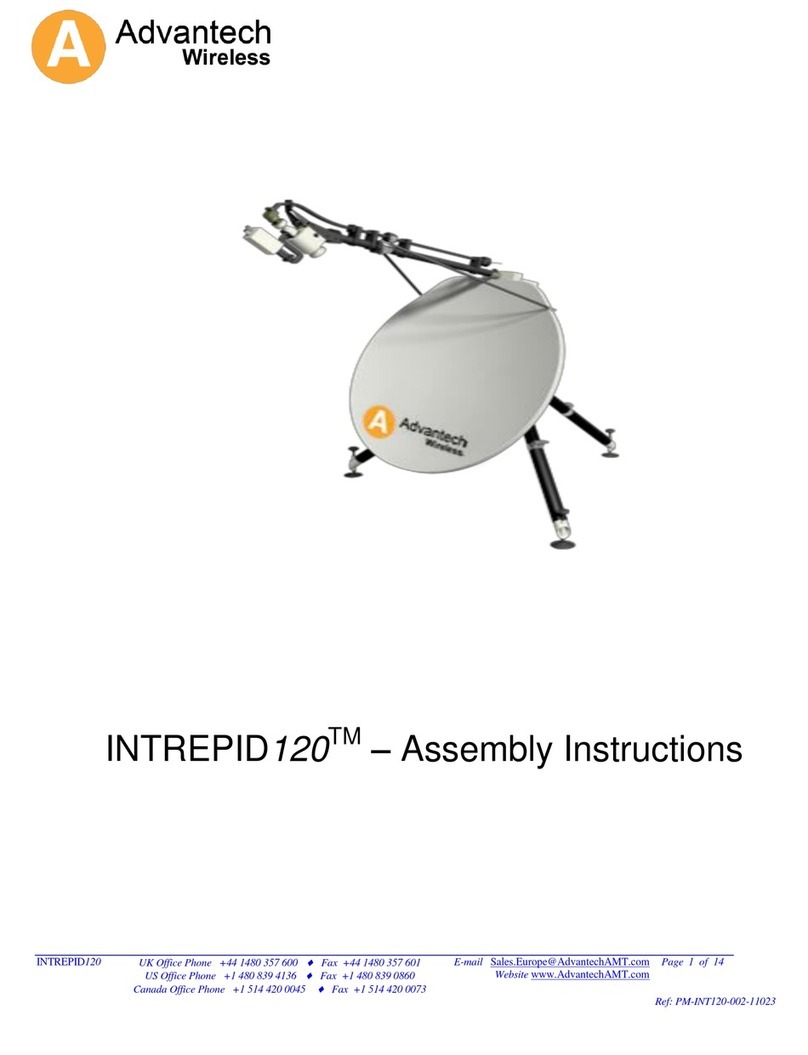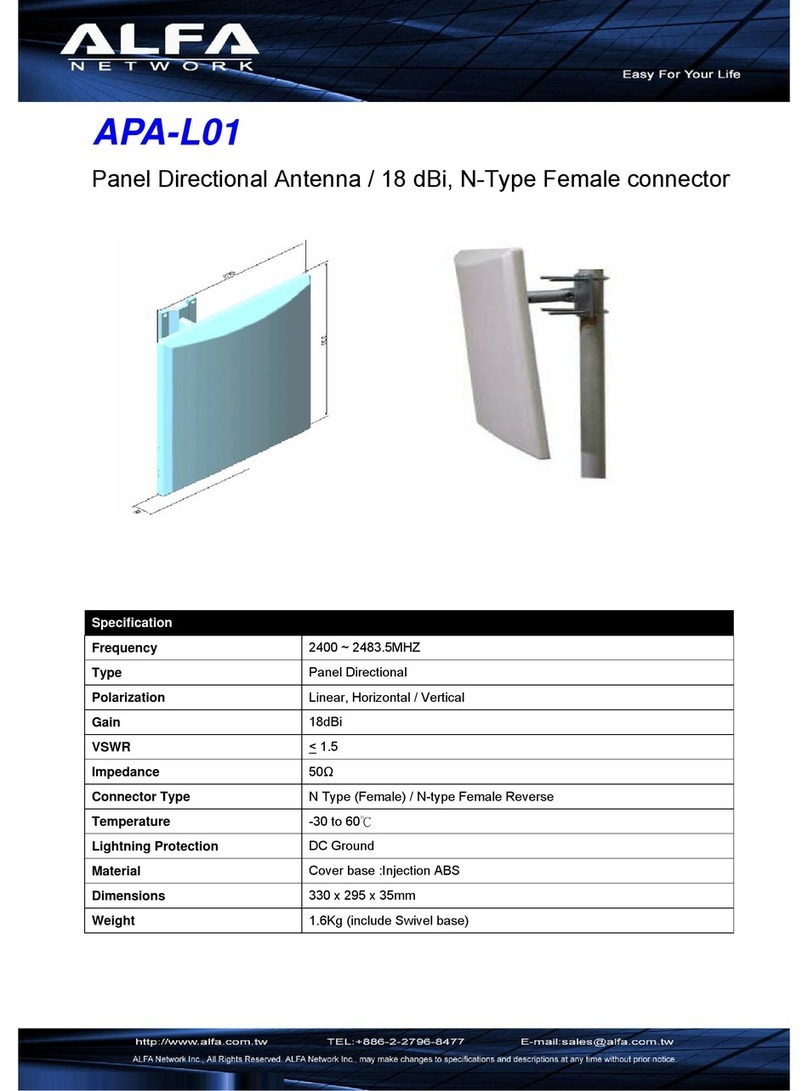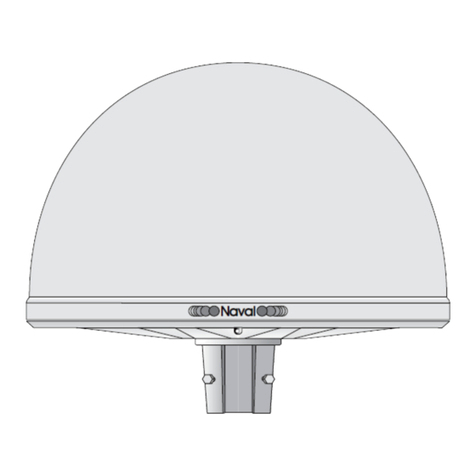
Page-8 BevFlex-4X Installation Manual Rev 2.23 November 2019
BEVERAGE ANTENNA INSTALLATION:
1. Determine the location for your BevFlex-4X antenna and install a 4 ft. ground rod at one end. (Scrap copper water pipe
can also be used in soft ground). Try to locate the BevFlex-4X antenna element as far as possible from your transmitting
antenna and its counterpoise radials. Undesirable coupling between the BevFlex-4X and other antennas can degrade the
directivity and noise performance of the BevFlex-4X. Close coupling of the BevFlex-4X to a transmitting antenna can also
result in damage to the BevFlex-4X components and the receiver. It is recommended that the BevFlex-4X be spaced a
minimum of 50 ft. from a transmitting antenna operating at power levels up to1500 Watts. There is one exception to the
spacing rule. Two BevFlex-4X antennas can be placed perpendicular to each other to provide reception in four different
directions. In this case, the two perpendicular antennas can cross over each other as long as at least 12” of spacing
between the two coaxial antenna elements is maintained. Multiple BevFlex-4X’s can be used as a phased array, but this
application is beyond the scope of these instructions. Using the measurement tool within Google Earth to place the antenna
location and directional heading on your property can be a very helpful planning step.
2. The factory default settings for the internal jumpers in the termination units are for the Beverage/BOG configuration. See
Table-3, Figure-19, and Figure-20 for more information.3. Connect one end of the RG-6 coax cable used as the antenna to
one of the Termination Units in the kit.
4. Connect a short piece of hook up wire (non-critical, #12 or #14 recommended) between the ground rod clamp and terminal
stud # 1 of the end box for the above ground Beverage configuration or to stud #2 for the Beverage On Ground (BOG)
configuration (using the default internal jumper settings). It is recommended that the Termination Unit be located near
ground level and close to the ground rod with the F connector toward the ground.
5. Run the RG-6 coaxial cable between the two end points maintaining relatively constant height above ground and keeping
track of your direction of travel. The RG-6 coaxial cable should be insulated from the supporting trees or other supporting
structures. Several different types of electric fence insulators are readily available for this purpose. A height of 7 to 10 feet
above ground is ideal and keeps the wire high enough to allow mowing under the antenna and to reduce the possibility of
damage from passing people or animals. (antenna heights as low as 18 inches above ground level can be used, but make
the antenna more vulnerable to damage) Variations in the height above ground due to uneven terrain or uneven support
heights will have little effect on the antenna performance.
The RG-6 coaxial cable can follow the general contour of the land if you are going up and down hills and can be supported
by tree limbs with cable ties or tree trunks with “nail on” electric fence insulators. Whichever type of supports you use, allow
the coaxial cable antenna element to slide freely though the supports to allow for expansion and contraction as well as
movement of the supporting trees, etc. The RG-6 coaxial cable comprising the antenna element does not have to go in an
exact straight line on the desired heading. It is OK for the antenna to zig-zag a few feet in either direction as long as the
average heading of the antenna element is maintained. A moderate amount of symmetrical zig-zag of the antenna element
coaxial cable actually introduces some “electrical loading” and reduces the velocity factor of the antenna, making it perform
as if it were physically longer than it actually is. BE SURE TO ALLOW A FEW EXTRA FEET OF RG-6 COAXIAL CABLE
AT THE POINT WHERE YOU INTEND TO FEED THE SIGNALS BACK TO YOUR SHACK. It is necessary to provide
stress reduction loops where the Feed Unit will be connected.
Using RG-6 cable with a messenger wire is suggested for elevated Beverage antennas with widely spaced supports. The
messenger wire provides support for the coaxial cable. Follow these guidelines when using this type of coax.
-The ends must be insulated from ground and metal objects at the ends.
-Connect the ends to the F connector on the Terminator Units. Use a 3/8” ring lug and a 3/8” hex nut over the
threaded portion of the Terminator F connector. Leave enough length to provide a drip loop to prevent water from
entering the Terminator unit. You might want to splice stranded wire to the messenger wire and use that to the
ring lug for flexibility.
-Maintain continuity of the messenger wire at the Feed Unit. If necessary, splice the messenger wires from the two
coaxial antenna sections.
-Waterproof messenger wire connections as you would any other antenna conductor

